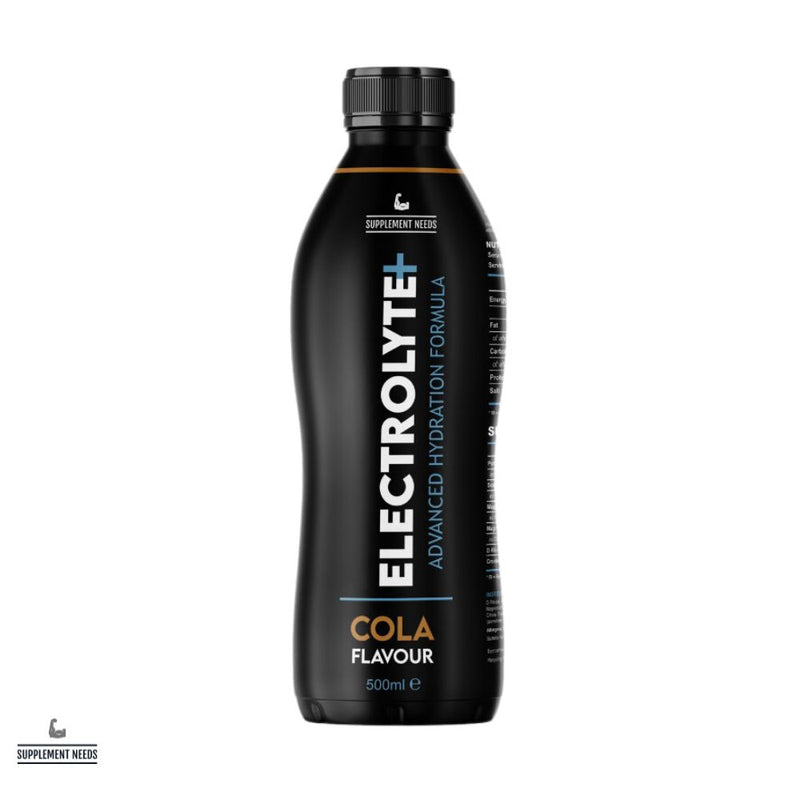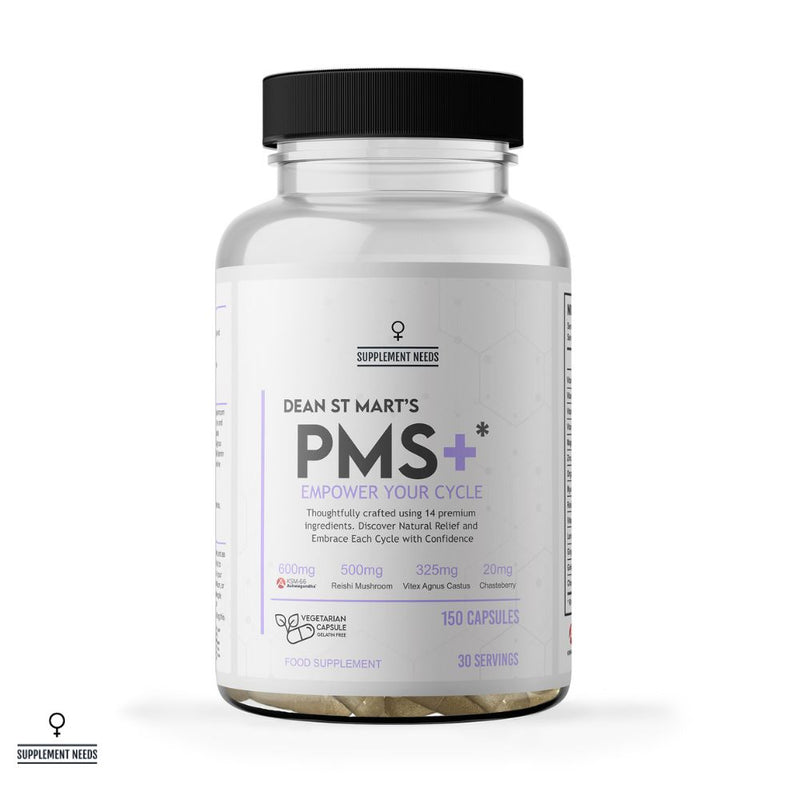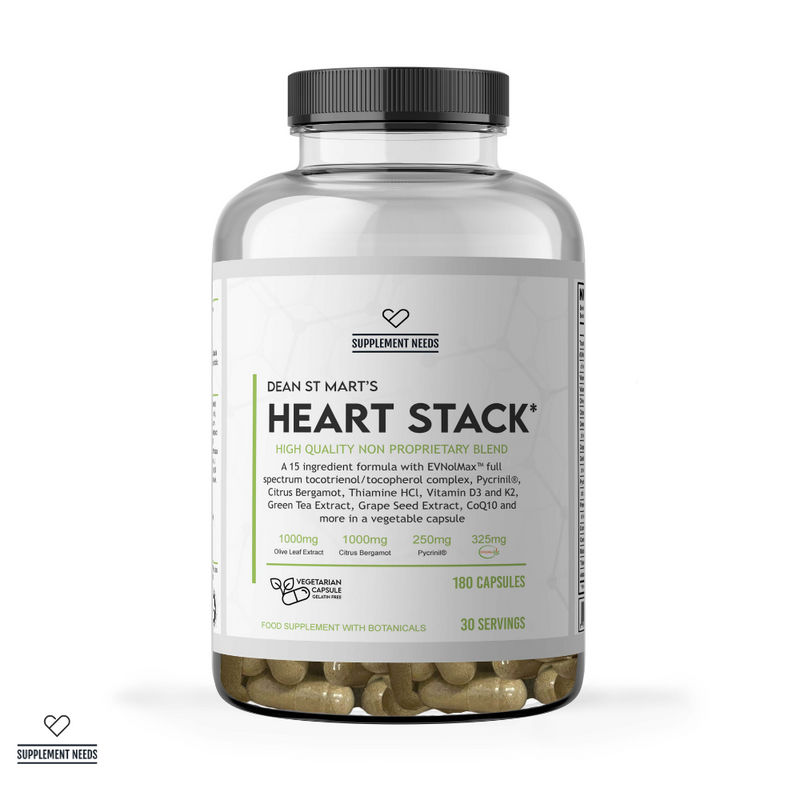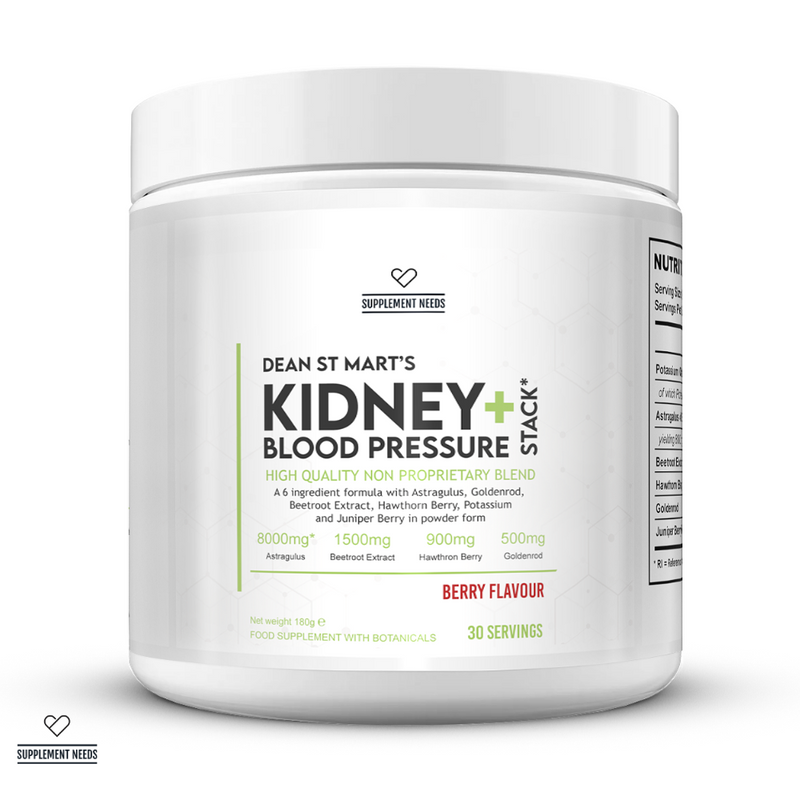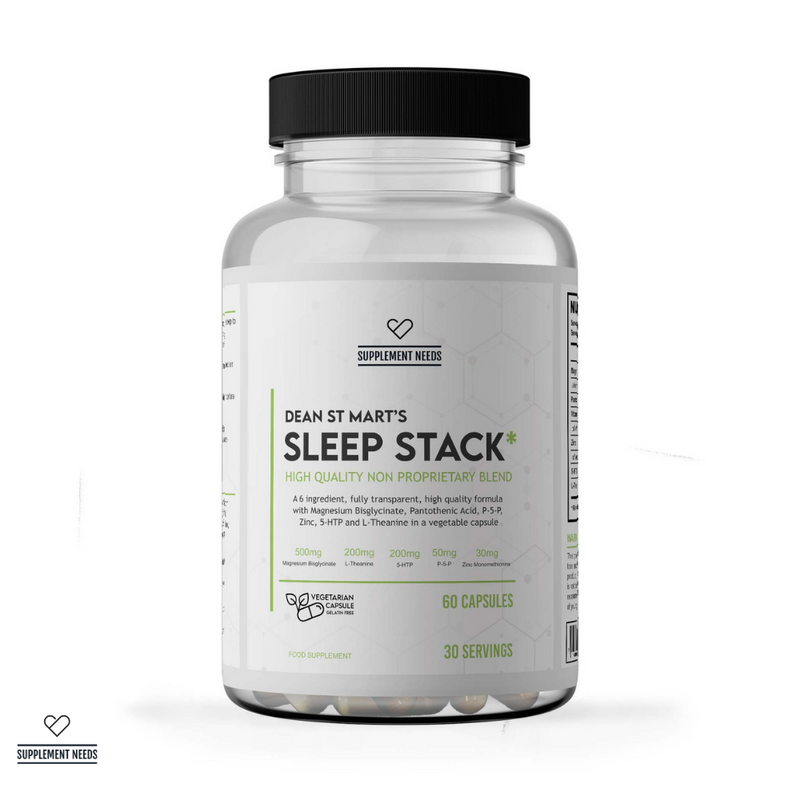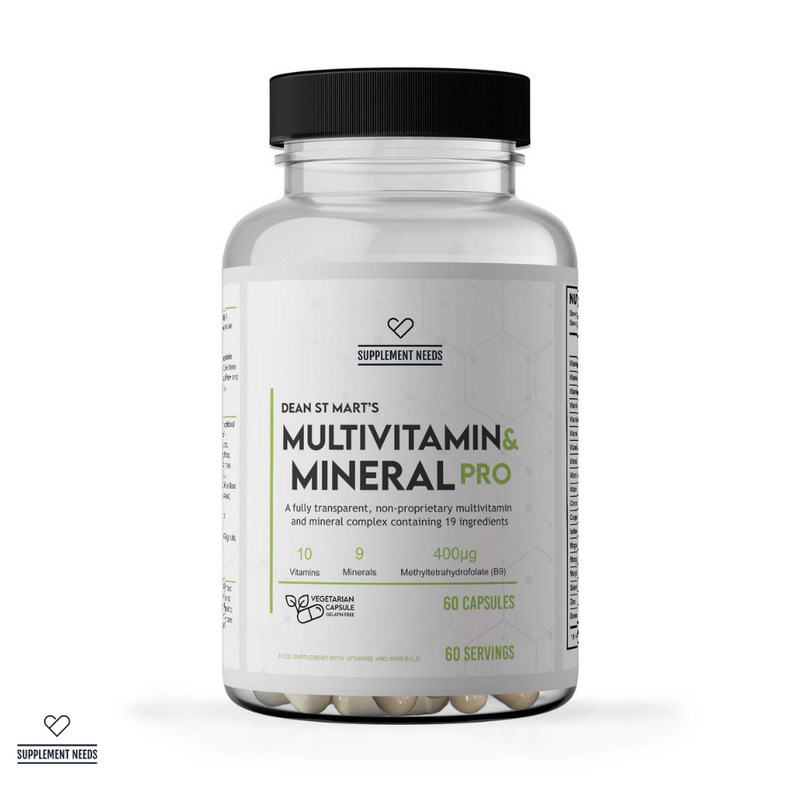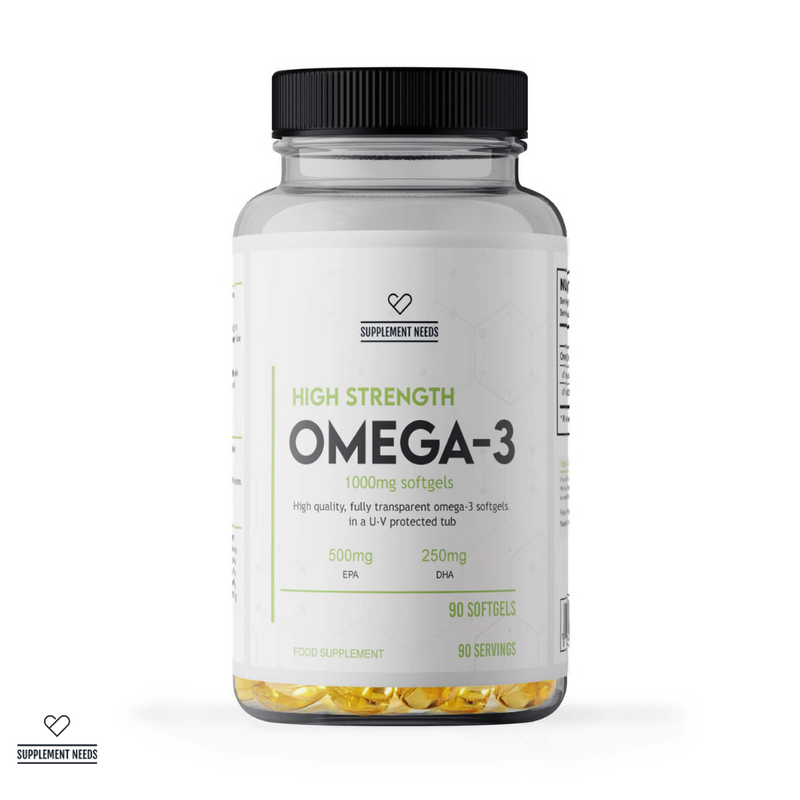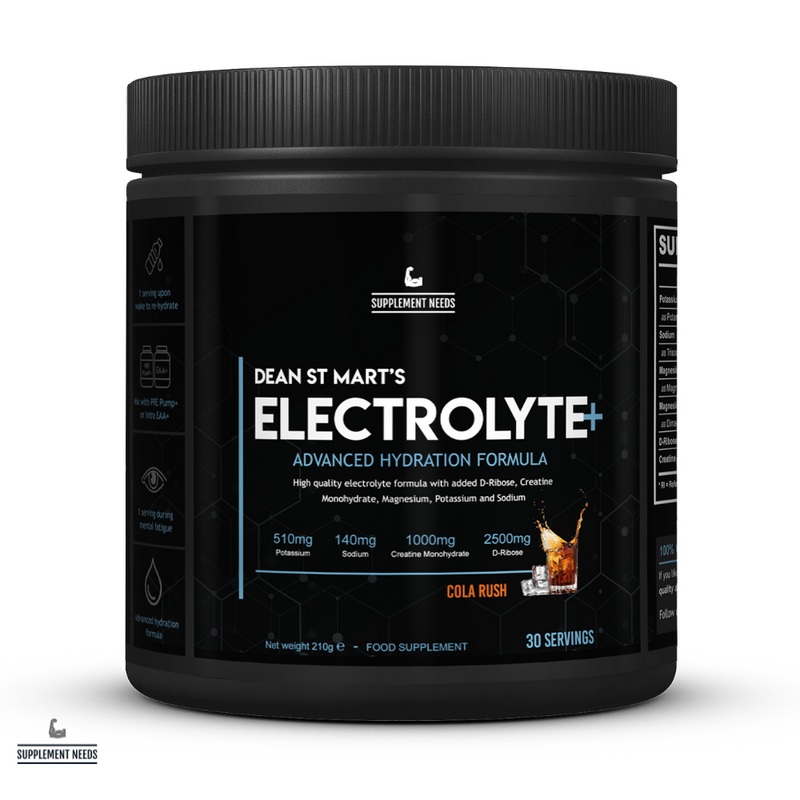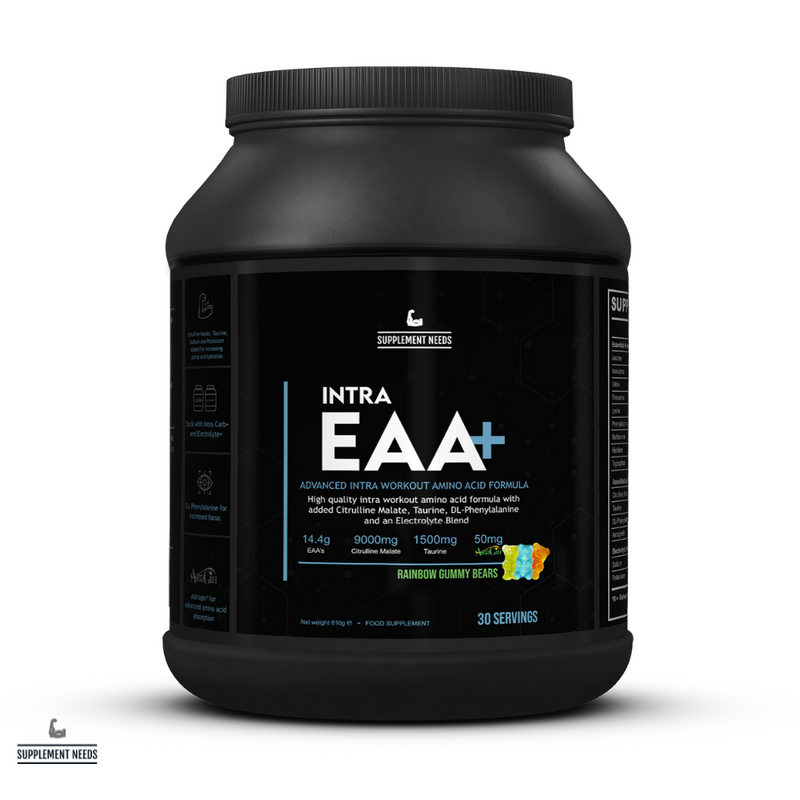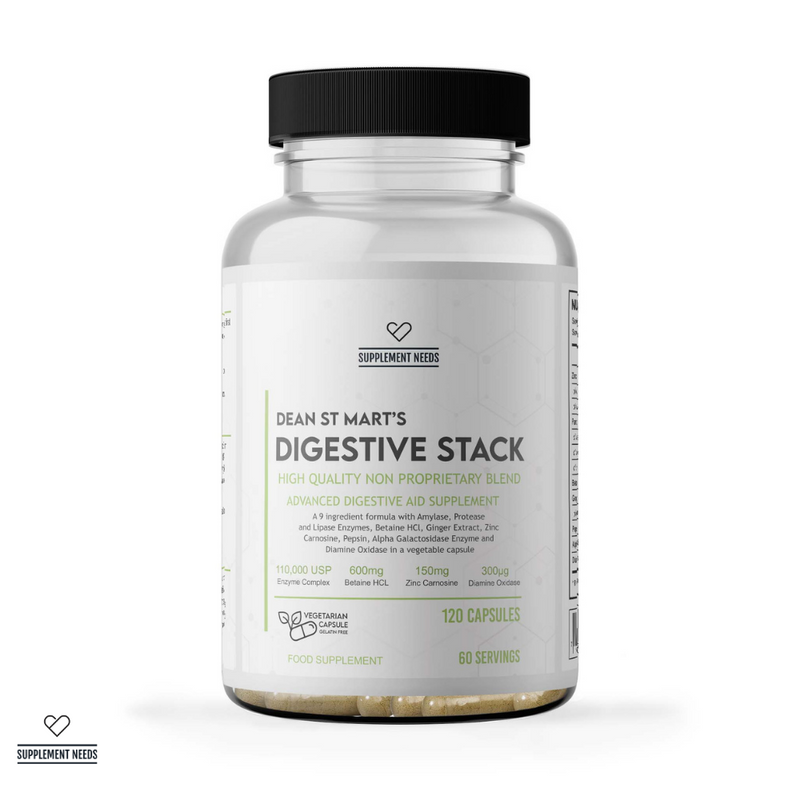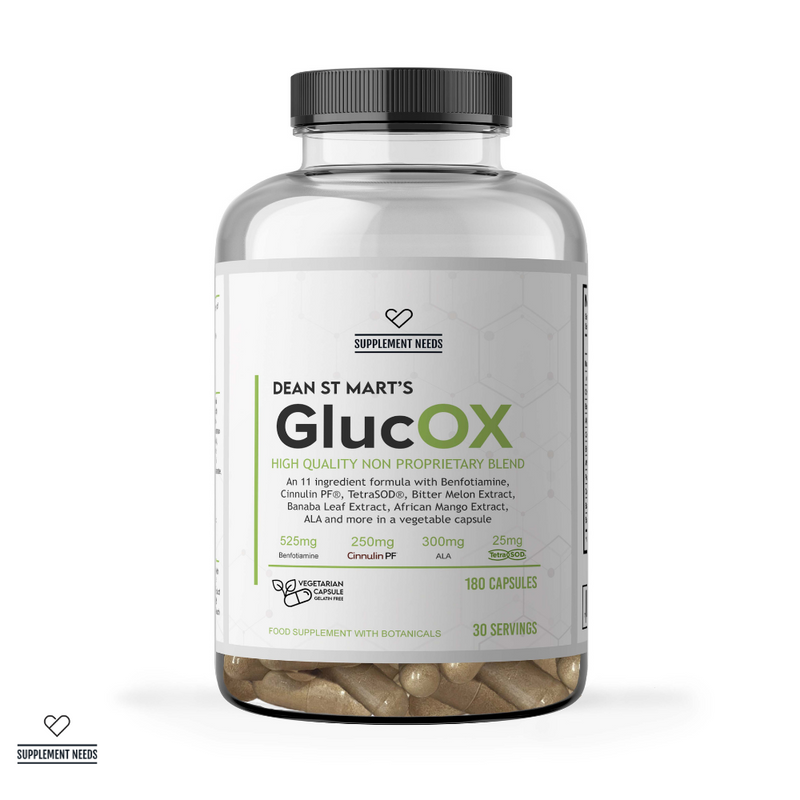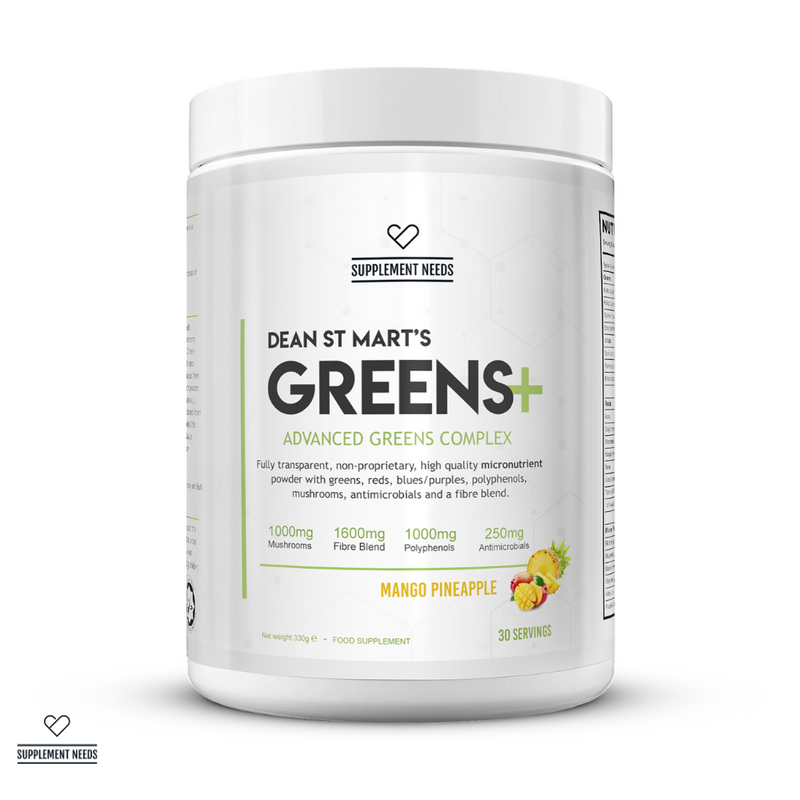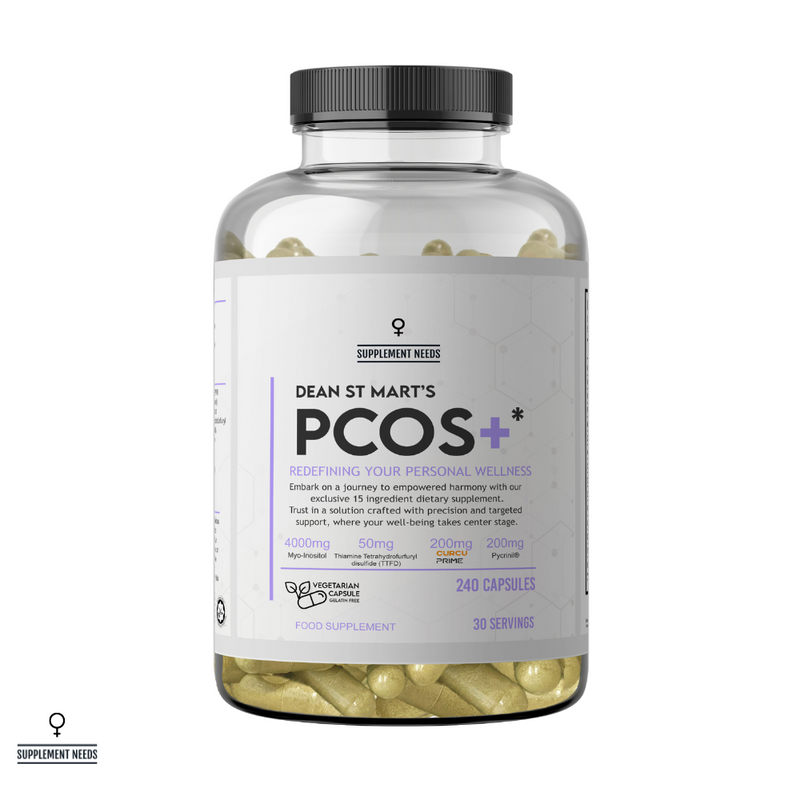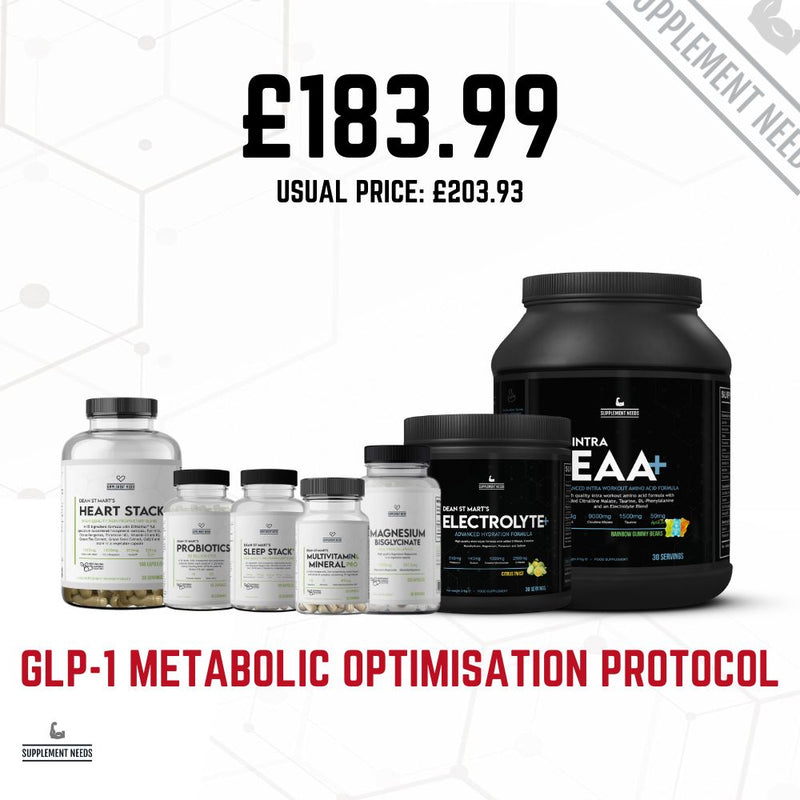Human lifespans continue to increase. However, if you’re looking to ensure that your years are not just longer, but healthier, then you may want to explore the world of longevity supplements. And, in the world of longevity supplements, PQQ has made quite the name for itself. In this article, the Supplement Needs team will explore PQQ and its purported benefits…
What is PQQ?
Pyrroloquinoline Quinone, or PQQ, is an aromatic water-soluble quinone1 (quinones being a class of organic compounds formally derived from aromatic compounds like benzene or naphthalene2).
It is notable for its role in two things:
-
A redox cofactor: organic molecules that participate in oxidation-reduction reactions.
-
An antioxidant: protecting cells from the damage caused by free radicals.
Unlike many cofactors that remain tightly bound to proteins, PQQ exists in a freestanding form, meaning that it is able to shuttle electrons between molecules in its oxidised or reduced states.
This electron-swapping ability defines its function in cellular energy transactions and protects cells from oxidative harm. It is this latter function that has given PQQ its reputation as a ‘longevity supplement’.
Scientists first discovered PQQ in 1964 as a cofactor in bacterial alcohol dehydrogenase, an enzyme that converts alcohol to aldehydes3. Its precise molecular structure was later unravelled in 1979, revealing a complex tricarboxylic quinone ring system.
That foundational work sparked decades of study into PQQ’s unusual stability and redox versatility compared with other quinones.
In bacteria, PQQ helps cells metabolise sugar and alcohol by feeding electrons into the respiratory chain, ultimately driving adenosine triphosphate (ATP) synthesis.
Over one hundred species of prokaryotes can manufacture PQQ, using it to harvest energy and fend off oxidative stress in harsh environments4. Bacterial PQQ synthase systems have even been explored as targets for novel antibiotics, given their absence in human metabolism5.
Humans and animals lack the bacterial machinery to produce PQQ, yet it is detectable in cell tissue. This presence is likely due to dietary uptake and microbial production in the gut. It appears in human breast milk at concentrations around 0.4–1.0 µg/L6, suggesting it could play a role in early human development.
What about plants? Well, plants don’t make PQQ themselves, but they absorb it from soil bacteria and use it as a growth factor. Trials in corn and Arabidopsis have found that PQQ supplementation stimulates root development and boosts chlorophyll content7, indicating the role PQQ plays in plant physiology.
Though PQQ is often called “vitamin-like”, it hasn’t been classified as an essential vitamin in humans. Deficiency syndromes aren’t well-defined. Still, some researchers argue for recognising PQQ alongside well-known B vitamins, given animal studies showing growth delays and organ dysfunction when PQQ is removed from the diet8.
But why all the debate? Well, part of it comes down to the terminology of what we call a “vitamin”. But on the other hand, its wide-ranging effects on mitochondria, enzymes and cellular hints at a greater supportive role in our long-term health.
Whether we label it a vitamin, a cofactor or a biofactor, one thing is clear: PQQ is a molecule worth watching.
The science of PQQ
What makes PQQ so special? To answer that, let’s look at the chemical compound of PQQ: 4,5-dihydro-4,5-dioxo-1H-pyrrolo [2,3-f] quinoline-2,7,9-tricarboxylic acid9.
Now, we’re not expecting that to make much sense on its own (unless you have a degree in chemistry), but it does provide some context to the way PQQ works, and what makes it so special.
PQQ is characterised by a pyrroloquinoline core with three carboxyl groups (tricarboxylic acid) and a quinone-like structure at the 4,5-positions.
It is a derivative of quinoline, a bicyclic aromatic compound, with a fused pyrrole ring and a quinoline ring system, and a dioxo group at the 4 and 5 positions. The quinone core flips between oxidised and reduced forms as it gains or loses electrons, acting as a mini battery inside cells.
Studies found that thanks to its ability to cycle rapidly through redox states without self-destructing, PQQ’s radical-scavenging efficiency is between 100 to 1000 times higher than that of ascorbic acid10. Again, in simpler terms, we can see why PQQ has such amazing potential as a longevity supplement!
Where other quinones tend to degrade or condense under physiological conditions, PQQ remains unusually stable and reusable.
What are the effects of PQQ on the body?
The effects of PQQ encompass a great many areas of the body, from cellular function to neuroprotection, anti-inflammation to metabolic regulation. Below, we’ve taken a deep dive into each of these effects and the scientific literature around each area.
Cellular function
Cells rely on mitochondria to turn nutrients into adenosine triphosphate (ATP), the energy currency that powers movement, repair, and life itself11.
PQQ is the first nutrient shown to spur the growth of new mitochondria, a process known as mitochondrial biogenesis. Studies found that dietary PQQ boosted mitochondrial numbers in liver and muscle by up to 20%, countering age-linked declines in energy output12.
PQQ achieves this by switching on key molecular regulators. It raises levels of PGC-1α (peroxisome proliferator-activated receptor gamma coactivator-1 alpha), often described as the “master regulator” of mitochondrial creation13, which in turn boosts the development of genes required to build mitochondrial membranes and enzymes. At the same time, PQQ activates CREB (cAMP response element-binding protein), which binds directly to the PGC-1α promoter region.
Not content with simply making new mitochondria, PQQ also refines the efficiency of existing ones. It does this by preserving mitochondrial membrane potential (the electrical gradient essential for ATP production) and preventing calcium overload, a trigger for cell death in ageing or stressed cells14.
By modulating MAPK (mitogen-activated protein kinase) and JAK/STAT pathways, PQQ down-regulates pro-apoptotic signals (such as phosphorylated MAPK14) and up-regulates protective kinases that support mitochondrial assembly and function15.
PQQ also stimulates sirtuins, the NAD+-dependent deacetylases linked to longevity. In cell cultures, PQQ raises SIRT1 and SIRT3 activity, which in turn supports fatty acid oxidation and improved oxidative stress resistance16.
By strengthening these sirtuin pathways, PQQ helps lead to healthier ageing at a cellular level, giving rise to its moniker as a “longevity vitamin”.
Neuroprotection and neurogenesis
Could a dietary compound help the brain grow new connections?
Evidence suggests PQQ can potentially elevate nerve growth factor (NGF), a protein vital for the survival, growth, and branching of neurons17. In cultured neurons, PQQ raised NGF levels by over 50%, promoting neurite outgrowth and synaptic plasticity, both of which are key to memory and learning.
Oxidative stress is a major factor in neurodegenerative diseases. PQQ’s radical-scavenging strength shields brain cells from glutamate-induced toxicity and preserves mitochondrial integrity within neurons.18

In studies of Alzheimer’s pathology, PQQ reduced beta-amyloid-induced apoptosis and prevented alpha-synuclein aggregation, both hallmarks of Parkinson’s disease19, and raised DJ-1 protein levels, an endogenous antioxidant defender in neural tissue.
Inflammation in the brain can also accelerate neuronal damage. PQQ dampens microglial activation and spurs autophagy, the cell’s recycling process, helping clear protein aggregates and reduce neuroinflammation20.
In a study of mice, PQQ supplementation cut pro-inflammatory cytokines in the hippocampus by nearly 40%, improving cognitive outcomes in a model of traumatic brain injury21.
In human studies, 20 mg of PQQ daily improved performance in attention and memory tasks and enhanced mood. Imaging using SPECT showed a 10% increase in cerebral blood flow to the prefrontal cortex, supporting improved neurovascular coupling22.
PQQ has also been linked to improved sleep quality. In one clinical trial, individuals taking 20 mg each morning showed a 15% improvement on the Pittsburgh Sleep Quality Index and experienced reduced daytime fatigue after eight weeks23.
Anti-inflammation
Systemic inflammation is the cause of many chronic conditions, from arthritis to atherosclerosis, yet PQQ can provide support.
PQQ intervenes by neutralising reactive oxygen species and blocking nuclear factor kappa-B (NF-κB), the transcription factor that drives inflammatory gene expression24. In cultured macrophages, PQQ lowered TNF-α, IL-1β and IL-6 secretion by over 60% following endotoxin challenge.
In liver models of sepsis-induced injury, PQQ reduced hepatocyte apoptosis by down-regulating CUL3, a protein involved in cellular stress responses.
Renal cells exposed to high glucose or oxidative stress saw PQQ restore Nrf2 nuclear translocation, boosting antioxidant enzyme production and inhibiting the NLRP3 inflammasome pathway25. This led to markedly lower reactive oxygen species levels and decreased markers of cellular senescence in kidney tissue.
Human trials echoed these findings. 20 mg of PQQ daily for four weeks significantly reduced C-reactive protein and interleukin-6 in middle-aged subjects with elevated inflammatory markers, corroborating its systemic anti-inflammatory potential26.
Metabolic regulation
Energy homeostasis demands a fine-tuned switch between storage and expenditure. PQQ activates AMPK (AMP-activated protein kinase), the fuel gauge of the cell, which encourages glucose uptake and fatty acid oxidation when energy is low27.
In rodent studies, PQQ raised AMPK phosphorylation in muscle, leading to improved insulin sensitivity and reduced fat accumulation28.
PQQ also downregulates lipogenesis by inhibiting acetyl-CoA carboxylase (ACC) and sterol regulatory element-binding protein-1 (SREBP-1), enzymes central to fatty acid synthesis29. Concurrently, it enhances expression of PGC-1α in adipose tissue, promoting the burning of stored fats for energy.
Animal studies suggest that PQQ can enhance pancreatic beta-cell function, improving insulin response in diabetic models30. If true, PQQ could have massive potential for combating diabetes in humans.
Gut health and microbiome
A healthy gut is foundational to systemic wellness. The intestinal barrier prevents pathogens and toxins from entering circulation, and regulates immune responses and nutrient absorption.
Equally vital is the gut microbiome, an ecosystem of microbes that influence inflammation, metabolism, and even mood via the gut–brain axis. Disruptions to this balance have been linked to conditions ranging from obesity to autoimmune disease.
Evidence suggests that PQQ may play an important role in gastrointestinal integrity and microbial homeostasis. Rodent studies found that PQQ supplementation strengthened the intestinal barrier by up-regulating tight junction proteins (such as occludin, claudin-1, and ZO-1) which are essential for maintaining gut lining cohesion31.
Along with that, PQQ modulated the gut microbiota, reversing high-fat-diet-induced shifts in the Firmicutes/Bacteroidetes ratio - a microbial imbalance often linked to metabolic dysfunction and obesity32.
It also encouraged the growth of butyrate-producing bacteria such as Faecalibacterium and Roseburia, known for nourishing colonocytes, regulating immune responses, and dampening intestinal oxidative stress33.
Through this dual action of fortifying mucosal barriers and steering microbial diversity, PQQ may indirectly support immune resilience, systemic inflammation control, and even neurochemical signalling via the gut–brain axis.
Guide: to learn more about gut health, read our guide What Is the Microbiome? The Importance of Gut Health.
Cardiovascular health
Cardiovascular disease remains a leading cause of death globally, largely driven by oxidative stress, endothelial dysfunction, and lipid imbalances.
The heart’s high mitochondrial density makes it particularly vulnerable to free radical damage, especially during events such as ischaemia–reperfusion injury. Cholesterol dysregulation (especially elevated LDL) is another key driver of atherosclerosis and myocardial risk.
Supporting mitochondrial stability and vascular resilience is therefore integral in maintaining cardiovascular health. PQQ’s cardiovascular benefits stem from its ability to defend energy-demanding cardiac cells against oxidative injury while preserving mitochondrial integrity.
In a rat model of ischaemia–reperfusion injury, PQQ administration reduced myocardial infarct size by approximately 30%, mitigated troponin release, and maintained ejection fraction, suggesting enhanced recovery post-ischemic insult34.

Mechanistically, PQQ scavenges mitochondrial ROS and stabilises mitochondrial membrane potential in cardiomyocytes, thereby preventing cytochrome c leakage and apoptosis. It also activates protective kinases such as Akt and ERK1/2, which support vascular endothelial function and nitric oxide bioavailability35.
Although human research remains limited, one 12-week study found that a daily dose of 20 mg PQQ resulted in a 7% reduction in LDL cholesterol among individuals with elevated baseline levels, with no adverse impact on HDL or triglycerides36.
These findings point to a cardioprotective role for PQQ that may extend beyond mitochondrial health into lipid regulation and endothelial resilience.
Through these intertwined pathways, PQQ exerts a broad, yet focused, influence on cell function and resilience. It is no wonder that many people are turning to supplementation to achieve the optimum levels of PQQ.
The “vitamin” controversy
As we alluded to earlier, not everyone has been so quick to extol praise towards PQQ, thanks in part to terminology.
What makes a substance a vitamin? By definition, vitamins are organic compounds that organisms (generally - although there are some exceptions) cannot synthesise in sufficient quantities and must therefore obtain through diet to prevent deficiency diseases37.
So where does PQQ fit into this classification? It’s difficult to exactly define, with some studies38 referring to it as a ‘vitamin-like’ substance rather than as a vitamin per se.
In animal studies, removing PQQ from the diet led to clear signs of dysfunction. Rats fed a PQQ-deficient diet exhibited stunted growth, impaired reproductive performance and reduced litter sizes39.
Mice showed delayed neonatal development and weaker immune responses when PQQ was withheld, only to rebound once PQQ was reintroduced into their chow40. These findings mirror classic vitamin-deficiency syndromes in other biofactors.
The problem is that human results differ.
To date, no one has described a definitive PQQ-deficiency disease in people. Unlike vitamins A or C, there are no documented symptoms (such as scurvy or xerophthalmia) that vanish when PQQ intake is restored41.
Human plasma PQQ levels hover around 1–2 ng/mL even in varied diets, suggesting some baseline sufficiency from food and perhaps gut microbes.
Does that mean PQQ isn’t essential for us? Not necessarily. It simply means we lack the clear, dose-dependent deficiency markers that prompt official nutrient reference values.
Regulatory bodies such as the UK’s Scientific Advisory Committee on Nutrition (SACN) and the US Institute of Medicine assign vitamin-status to a nutrient only when:
-
Absence produces a recognised syndrome.
-
Dietary studies confirm intake gaps are common enough to warrant guidelines.
PQQ currently misses both criteria.
Still, some experts advocate for calling PQQ a “longevity vitamin” or “biofactor”. Their arguments hinge on long-term health rather than survival.
PQQ’s role in mitochondrial biogenesis, antioxidant defence and cellular signalling suggests it may influence chronic disease risk and healthy ageing. If PQQ enhances tissue repair, mitigates inflammation and preserves energy metabolism over decades, could it qualify as essential for long-term function? That remains an open question.
But until human trials establish clear deficiency thresholds and clinical outcomes tied directly to PQQ intake, PQQ can’t officially join the B-vitamin family.
PQQ supplements vs. dietary PQQ
How much PQQ do you get from food, and is that enough?
Dietary sources supply only trace amounts. Fermented soybeans (natto) contain roughly 61 ng of PQQ per gram, while kiwifruit, green pepper, parsley and spinach range from 0.2 to 10 ng/g. Even a diet rich in these foods yields perhaps 0.1-2 mg of PQQ daily - far below the 10–20 mg doses commonly studied in supplements.
Foods that are rich in PPQ include:
-
Natto (fermented soybeans): ~61 ng/g
-
Parsley: ~5-10 ng/g
-
Green peppers: ~2-4 ng/g
-
Spinach: ~1-3 ng/g
-
Kiwi fruit: ~2 ng/g
-
Papaya: ~1 ng/g
-
Tea (especially green tea): ~0.5 ng/mL infusion
-
Carrots, cabbage, potato, sweet potato, celery, tomato: 0.2-1 ng/g
-
Dark chocolate: ~0.5 ng/g
-
Human breast milk: 0.4-1.0 µg/L
Even a diet rich in these foods yields only around 0.1-2 mg of PQQ per day. Sufficient for basic functions, but far below the 10-20 mg doses commonly studied in supplements.
Supplements provide a concentrated dose of PQQ. At Supplement Needs, our PQQ tabs are formulated using 20 mg of Pyrroloquinoline Quinone - approximately 20,000 times the PQQ you might obtain from a salad. This higher supplemental intake is needed to trigger measurable effects on mitochondria, cognition, and inflammation in adults.
Are PQQ supplements safe to use?
If PQQ supplements can provide up to 20,000 times as much PQQ as a healthy diet, are they safe to use?
Thankfully, existing data offers a reassuring answer. Human trials of 20 mg per day for 8 to 12 weeks reported no serious adverse events42. Subjects did not experience headaches, digestive upset or allergic reactions beyond placebo levels, and vital signs remained stable throughout the intervention period. These findings align with animal data showing no toxicity at moderate doses.
In rats, the No-Observed-Adverse-Effect-Level (NOAEL) was determined at 400 mg/kg body weight per day, translating to a human equivalent ceiling of approximately 4 mg/kg (around 240 mg for a 60 kg adult) before safety margins become uncertain43.
All good news so far. However, it’s important to note that data remains limited on the long-term effects of PQQ, so prolonged use may cause unforeseen side effects.
Similarly, users should avoid high doses of PQQ. Animal experiments at 1,000 mg/kg showed mild kidney changes over prolonged periods, suggesting renal function should be monitored in extreme scenarios44.
For humans, staying at the 20 mg daily threshold provides a large safety cushion relative to observed NOAEL values.
However, for people with diabetes, PQQ may pose a different kind of problem. One notable issue is interference with certain blood-glucose monitoring systems. PQQ-dependent glucose dehydrogenase (GDH-PQQ) strips can mistake maltose, icodextrin or other sugars for glucose, leading to overestimated readings45. For people with diabetes using such monitors, being aware of this interference will help to avoid accidental insulin overdosing.
Note: Supplement Needs PQQ has been designed to be taken once a day (a serving of 1-2 tabs).
Should you take PQQ supplements?
The research on PQQ is promising, but it’s still early days.
Human trials studying daily doses of 10-20 mg for periods of 8 to 12 weeks reported benefits in energy metabolism, cognitive measures and inflammation without significant adverse events.
Yet these studies tend to be small and focused on otherwise healthy adults. Large-scale, long-term trials are needed to confirm whether PQQ truly alters disease risk or slows age-related decline.
If you’re considering PQQ, start by assessing your goals and your lifestyle.
The typical diet normally provides 0.1-2 mg of PQQ daily, which appears sufficient for baseline cellular functions, but is unlikely to trigger the beneficial mitochondrial and neuroprotective effects seen in intervention studies.
If you favour a food-first approach, focus on a wide variety of fruits, vegetables and fermented products. A PQQ supplement can bridge the gap between nutritional intake and research-tested dosages.
Before starting PQQ, review any medications you take, especially those affecting redox balance or mitochondrial function, and consult your doctor.
Diabetic individuals using GDH-PQQ glucose monitors should also take precautions, as PQQ can interfere with certain test strips and give misleading glucose readings.
In the absence of definitive long-term safety data, treat PQQ as a thoughtful experiment in self-care rather than a magic spell to a healthier, longer life.
Monitor how you feel, and discontinue immediately use if unwanted side effects arise.
Supplement Needs: your one-stop-shop for supplementation

We hope you’ve found this deep dive into PQQ interesting and informative. If you are interested in trying out this “longevity vitamin” - or indeed any other products in our extensive range - then look no further.
At Supplement Needs, we have a wide ranging selection of supplements carefully designed to provide the vitamins and minerals at efficacious doses to live a healthy life.
Formulated by Dr Dean St Mart PhD, an industry-leader in supplementation, our range addresses every aspect of dietary supplementation to help you get the most out of your productivity needs.
Shop Supplement Needs PQQ today
For more insights and information about supplements, read the Supplement Needs blog…
What Is Biohacking? How Does It Work? | Could Supplements Make You More Productive? A Deep Dive Into Productivity Supplements | Alpha GPC: Decoding the Hype (and the Science)
Disclaimer:
The information on this website should not be used as a substitute for professional medical advice. If you have any questions about your health, or are planning to change your diet, please contact your doctor.
References:
1. Jonscher, K. Chowanadisai, W. Rucker, R. Pyrroloquinoline-Quinone Is More Than an Antioxidant: A Vitamin-like Accessory Factor Important in Health and Disease Prevention [online]. Available at: https://pmc.ncbi.nlm.nih.gov/articles/PMC8533503/ (Accessed on 25th June 2025).
2. Wikipedia. Quinone [online]. Available at: https://en.wikipedia.org/wiki/Quinone (Accessed on 30th June 2025).
3. Duine, J. The PQQ story. J Biosci Bioeng. 1999 https://pubmed.ncbi.nlm.nih.gov/16232604/ (Accessed on 25th June 2025).
4. Shen YQ, Bonnot F, Imsand EM, RoseFigura JM, Sjölander K, Klinman JP. Distribution and properties of the genes encoding the biosynthesis of the bacterial cofactor, pyrroloquinoline quinone. Biochemistry. 2012 Mar 20 https://pmc.ncbi.nlm.nih.gov/articles/PMC3334298/ (Accessed on 25th June 2025).
5. Labib M, Alqahtani A, Nahas H, et. al. Novel Insights into the Antimicrobial and Antibiofilm Activity of Pyrroloquinoline Quinone (PQQ); In Vitro, In Silico, and Shotgun Proteomic Studies [online]. Available at: https://pmc.ncbi.nlm.nih.gov/articles/PMC11352295/ (Accessed on 30th June 2025).
6. ResearchGate. Determination of pyrroloquinoline quinone by enzymatic and LC-MS/MS methods to clarify its levels in foods. https://www.researchgate.net/figure/Concentration-of-PQQ-in-food-samples-determined-by-the-enzymatic-method_tbl1_329858606 (Accessed on 25th June 2025).
7. Fang T, Lo SC, Yu YN, Sou NL, Hung SW, Peng JH, Chiang EI, Huang CC. Development of an Engineered Bacterial Endophyte: Promoting Plant Growth Through Pyrroloquinoline Quinone (PQQ) Synthesis. Microorganisms. 2025 Jan 28 https://pmc.ncbi.nlm.nih.gov/articles/PMC11858353/ (Accessed on 25th June 2025).
8. Jonscher, K. Chowanadisai, W. Rucker, R. Pyrroloquinoline-Quinone Is More Than an Antioxidant: A Vitamin-like Accessory Factor Important in Health and Disease Prevention [online]. Available at: https://pmc.ncbi.nlm.nih.gov/articles/PMC8533503/ (Accessed on 25th June 2025).
9. Charrier D, Cerullo G, Carpenito R, Vindigni V, Bassetto F, Simoni L, Moro T, Paoli A. Metabolic and Biochemical Effects of Pyrroloquinoline Quinone (PQQ) on Inflammation and Mitochondrial Dysfunction: Potential Health Benefits in Obesity and Future Perspectives. Antioxidants (Basel). 2024 Aug 24 https://pmc.ncbi.nlm.nih.gov/articles/PMC11429417/ (Accessed on 25th June 2025).
10. Jonscher KR, Chowanadisai W, Rucker RB. Pyrroloquinoline-Quinone Is More Than an Antioxidant: A Vitamin-like Accessory Factor Important in Health and Disease Prevention. Biomolecules. 2021 Sep 30 https://pmc.ncbi.nlm.nih.gov/articles/PMC8533503/#B12-biomolecules-11-01441 (Accessed on 25th June 2025).
11. Dunn J, Grider MH. Physiology, Adenosine Triphosphate. 2025 Jan https://www.ncbi.nlm.nih.gov/books/NBK553175/ (Accessed on 25th June 2025).
12. Bauerly K, Harris C, Chowanadisai W, Graham J, Havel PJ, Tchaparian E, Satre M, Karliner JS, Rucker RB. Altering pyrroloquinoline quinone nutritional status modulates mitochondrial, lipid, and energy metabolism in rats. PLoS One. 2011 https://pmc.ncbi.nlm.nih.gov/articles/PMC3140972/ (Accessed on 25th June 2025).
13. Bauerly K, Harris C, Chowanadisai W, Graham J, Havel PJ, Tchaparian E, Satre M, Karliner JS, Rucker RB. Altering pyrroloquinoline quinone nutritional status modulates mitochondrial, lipid, and energy metabolism in rats. PLoS One. 2011 https://pmc.ncbi.nlm.nih.gov/articles/PMC3140972/ (Accessed on 25th June 2025).
14. Bauerly K, Harris C, Chowanadisai W, Graham J, Havel PJ, Tchaparian E, Satre M, Karliner JS, Rucker RB. Altering pyrroloquinoline quinone nutritional status modulates mitochondrial, lipid, and energy metabolism in rats. PLoS One. 2011 https://pmc.ncbi.nlm.nih.gov/articles/PMC3140972/ (Accessed on 25th June 2025).
15. Jonscher, K. Chowanadisai, W. Rucker, R. Pyrroloquinoline-Quinone Is More Than an Antioxidant: A Vitamin-like Accessory Factor Important in Health and Disease Prevention [online]. Available at: https://pmc.ncbi.nlm.nih.gov/articles/PMC8533503/ (Accessed on 25th June 2025).
16. Jonscher, K. Chowanadisai, W. Rucker, R. Pyrroloquinoline-Quinone Is More Than an Antioxidant: A Vitamin-like Accessory Factor Important in Health and Disease Prevention [online]. Available at: https://pmc.ncbi.nlm.nih.gov/articles/PMC8533503/ (Accessed on 25th June 2025).
17. Azizi, A. Azizi, S. Heshmatian, B. Amini, K. Improvement of functional recovery of transected peripheral nerve by means of chitosan grafts filled with vitamin E, pyrroloquinoline quinone and their combination [online]. Available at: https://www.sciencedirect.com/science/article/pii/S1743919113010741 (Accessed on 25th June 2025).
18. Shen YQ, Bonnot F, Imsand EM, RoseFigura JM, Sjölander K, Klinman JP. Distribution and properties of the genes encoding the biosynthesis of the bacterial cofactor, pyrroloquinoline quinone. Biochemistry. 2012 Mar 20 https://pmc.ncbi.nlm.nih.gov/articles/PMC3334298/ (Accessed on 25th June 2025).
19. Jonscher, K. Chowanadisai, W. Rucker, R. Pyrroloquinoline-Quinone Is More Than an Antioxidant: A Vitamin-like Accessory Factor Important in Health and Disease Prevention [online]. Available at: https://pmc.ncbi.nlm.nih.gov/articles/PMC8533503/ (Accessed on 25th June 2025).
20. Gao S, Zhou Q, Jin H, Shi N, Wang X, Zhang L, Yan M. Effect of pyrroloquinoline quinone on lipopolysaccharide-induced autophagy in HAPI microglia cells. Ann Transl Med. 2021 Sep [online]. Available at: https://pmc.ncbi.nlm.nih.gov/articles/PMC8506552/ (Accessed on 25th June 2025).
21. Gao S, Zhou Q, Jin H, Shi N, Wang X, Zhang L, Yan M. Effect of pyrroloquinoline quinone on lipopolysaccharide-induced autophagy in HAPI microglia cells. Ann Transl Med. 2021 Sep [online]. Available at: https://pmc.ncbi.nlm.nih.gov/articles/PMC8506552/ (Accessed on 25th June 2025).
22. Jonscher, K. Chowanadisai, W. Rucker, R. Pyrroloquinoline-Quinone Is More Than an Antioxidant: A Vitamin-like Accessory Factor Important in Health and Disease Prevention [online]. Available at: https://pmc.ncbi.nlm.nih.gov/articles/PMC8533503/ (Accessed on 25th June 2025).
23. Nakano, M. Yamamoto, T. Okamura, H. Tsuda, A. Kowatari, Y. Effects of Oral Supplementation withPyrroloquinoline Quinoneon Stress, Fatigue, and Sleep. [online]. Available at: https://www.ffhdj.com/index.php/ffhd/article/view/81/175 (Accessed on 25th June 2025).
24. Gao S, Zhou Q, Jin H, Shi N, Wang X, Zhang L, Yan M. Effect of pyrroloquinoline quinone on lipopolysaccharide-induced autophagy in HAPI microglia cells. Ann Transl Med. 2021 Sep [online]. Available at: https://pmc.ncbi.nlm.nih.gov/articles/PMC8506552/ (Accessed on 25th June 2025).
25. Uddin M, Kim E, Hannan M, et. al. Pharmacotherapy against Oxidative Stress in Chronic Kidney Disease: Promising Small Molecule Natural Products Targeting Nrf2-HO-1 Signalling [online]. Available at: https://pmc.ncbi.nlm.nih.gov/articles/PMC7915495/ (Accessed on 30th June 2025).
26. Jonscher, K. Chowanadisai, W. Rucker, R. Pyrroloquinoline-Quinone Is More Than an Antioxidant: A Vitamin-like Accessory Factor Important in Health and Disease Prevention [online]. Available at: https://pmc.ncbi.nlm.nih.gov/articles/PMC8533503/ (Accessed on 25th June 2025).
27. Jonscher, K. Chowanadisai, W. Rucker, R. Pyrroloquinoline-Quinone Is More Than an Antioxidant: A Vitamin-like Accessory Factor Important in Health and Disease Prevention [online]. Available at: https://pmc.ncbi.nlm.nih.gov/articles/PMC8533503/ (Accessed on 25th June 2025).
28. Jonscher, K. Chowanadisai, W. Rucker, R. Pyrroloquinoline-Quinone Is More Than an Antioxidant: A Vitamin-like Accessory Factor Important in Health and Disease Prevention [online]. Available at: https://pmc.ncbi.nlm.nih.gov/articles/PMC8533503/ (Accessed on 25th June 2025).
29. Ishak N, Ikemoto K, Kikuchi M, et. al. Pyrroloquinoline Quinone Attenuates Fat Accumulation in Obese Mice Fed with a High-Fat Diet, Daphnia magna Supplied with a High Amount of Food, and 3T3-L1 Adipocytes [online]. Available at: https://pubs.acs.org/doi/10.1021/acsfoodscitech.1c00301 (Accessed on 30th June 2025).
30. Kumar N, Kar A. Pyrroloquinoline Quinone (PQQ) has potential to ameliorate streptozotocin-induced diabetes mellitus and oxidative stress in mice: a histopathological and biochemical study [online]. Available at: https://www.researchgate.net/publication/281588356_Pyrroloquinoline_Quinone_PQQ_has_potential_to_ameliorate_streptozotocin-induced_diabetes_mellitus_and_oxidative_stress_in_mice_a_histopathological_and_biochemical_study (Accessed on 30th June 2025).
31. Jonscher, K. Chowanadisai, W. Rucker, R. Pyrroloquinoline-Quinone Is More Than an Antioxidant: A Vitamin-like Accessory Factor Important in Health and Disease Prevention [online]. Available at: https://pmc.ncbi.nlm.nih.gov/articles/PMC8533503/ (Accessed on 25th June 2025).
32. Jonscher, K. Chowanadisai, W. Rucker, R. Pyrroloquinoline-Quinone Is More Than an Antioxidant: A Vitamin-like Accessory Factor Important in Health and Disease Prevention [online]. Available at: https://pmc.ncbi.nlm.nih.gov/articles/PMC8533503/ (Accessed on 25th June 2025).
33. Jonscher, K. Chowanadisai, W. Rucker, R. Pyrroloquinoline-Quinone Is More Than an Antioxidant: A Vitamin-like Accessory Factor Important in Health and Disease Prevention [online]. Available at: https://pmc.ncbi.nlm.nih.gov/articles/PMC8533503/ (Accessed on 25th June 2025).
34. Zhu BQ, Zhou HZ, Teerlink JR, Karliner JS. Pyrroloquinoline quinone (PQQ) decreases myocardial infarct size and improves cardiac function in rat models of ischemia and ischemia/reperfusion. Cardiovasc Drugs Ther. 2004 Nov [online]. Available at: https://pubmed.ncbi.nlm.nih.gov/15770429/ (Accessed on 26th June 2025).
35. Yan T, Nisar MF, Hu X, Chang J, Wang Y, Wu Y, Liu Z, Cai Y, Jia J, Xiao Y, Wan C. Pyrroloquinoline Quinone (PQQ): Its impact on human health and potential benefits: PQQ: Human health impacts and benefits. Curr Res Food Sci. 2024 Oct 22 [online]. Available at: https://pmc.ncbi.nlm.nih.gov/articles/PMC11541945/ (Accessed on 26th June 2025).
36. Yan T, Nisar MF, Hu X, Chang J, Wang Y, Wu Y, Liu Z, Cai Y, Jia J, Xiao Y, Wan C. Pyrroloquinoline Quinone (PQQ): Its impact on human health and potential benefits: PQQ: Human health impacts and benefits. Curr Res Food Sci. 2024 Oct 22 [online]. Available at: https://pmc.ncbi.nlm.nih.gov/articles/PMC11541945/ (Accessed on 26th June 2025).
37. Wikipedia. Vitamin [online]. Available at: https://en.wikipedia.org/wiki/Vitamin (Accessed on 25th June 2025).
38. Jonscher K, Chowanadisai W, Rucker R. Pyrroloquinoline-Quinone Is More Than an Antioxidant: A Vitamin-like Accessory Factor Important in Health and Disease Prevention [online]. Available at: https://pmc.ncbi.nlm.nih.gov/articles/PMC8533503/ (Accessed on 30th June 2025).
39. Jonscher, K. Chowanadisai, W. Rucker, R. Pyrroloquinoline-Quinone Is More Than an Antioxidant: A Vitamin-like Accessory Factor Important in Health and Disease Prevention [online]. Available at: https://pmc.ncbi.nlm.nih.gov/articles/PMC8533503/ (Accessed on 25th June 2025).
40. Jonscher, K. Chowanadisai, W. Rucker, R. Pyrroloquinoline-Quinone Is More Than an Antioxidant: A Vitamin-like Accessory Factor Important in Health and Disease Prevention [online]. Available at: https://pmc.ncbi.nlm.nih.gov/articles/PMC8533503/ (Accessed on 25th June 2025).
41. Yan T, Nisar MF, Hu X, Chang J, Wang Y, Wu Y, Liu Z, Cai Y, Jia J, Xiao Y, Wan C. Pyrroloquinoline Quinone (PQQ): Its impact on human health and potential benefits [online]. Available at: https://pmc.ncbi.nlm.nih.gov/articles/PMC11541945/ (Accessed on 25th June 2025).
42. Jonscher, K. Chowanadisai, W. Rucker, R. Pyrroloquinoline-Quinone Is More Than an Antioxidant: A Vitamin-like Accessory Factor Important in Health and Disease Prevention [online]. Available at: https://pmc.ncbi.nlm.nih.gov/articles/PMC8533503/ (Accessed on 25th June 2025).
43. Jonscher, K. Chowanadisai, W. Rucker, R. Pyrroloquinoline-Quinone Is More Than an Antioxidant: A Vitamin-like Accessory Factor Important in Health and Disease Prevention [online]. Available at: https://pmc.ncbi.nlm.nih.gov/articles/PMC8533503/ (Accessed on 25th June 2025).
44. Jonscher, K. Chowanadisai, W. Rucker, R. Pyrroloquinoline-Quinone Is More Than an Antioxidant: A Vitamin-like Accessory Factor Important in Health and Disease Prevention [online]. Available at: https://pmc.ncbi.nlm.nih.gov/articles/PMC8533503/ (Accessed on 25th June 2025).
45. Jonscher, K. Chowanadisai, W. Rucker, R. Pyrroloquinoline-Quinone Is More Than an Antioxidant: A Vitamin-like Accessory Factor Important in Health and Disease Prevention [online]. Available at: https://pmc.ncbi.nlm.nih.gov/articles/PMC8533503/ (Accessed on 25th June 2025).
